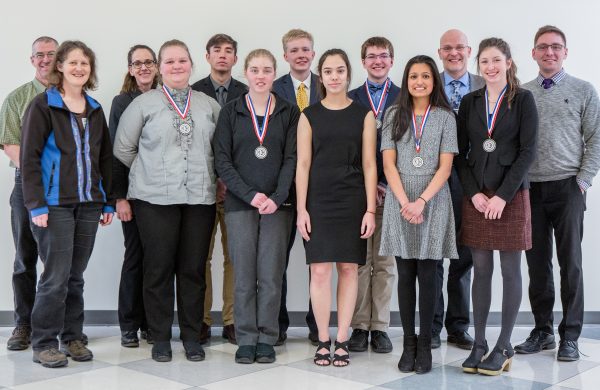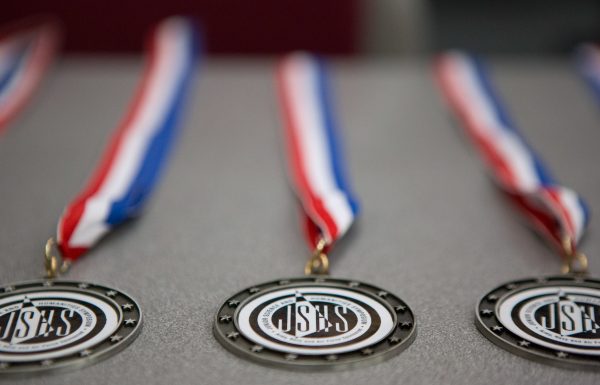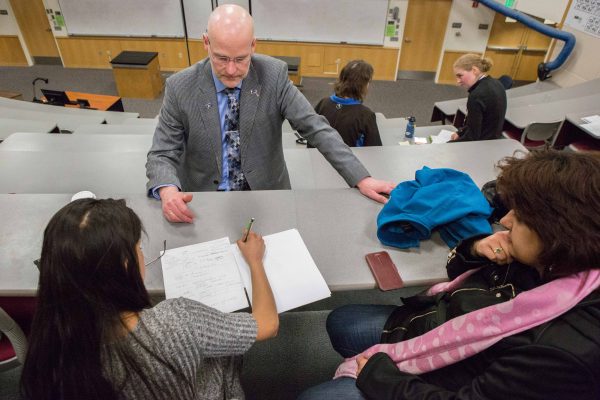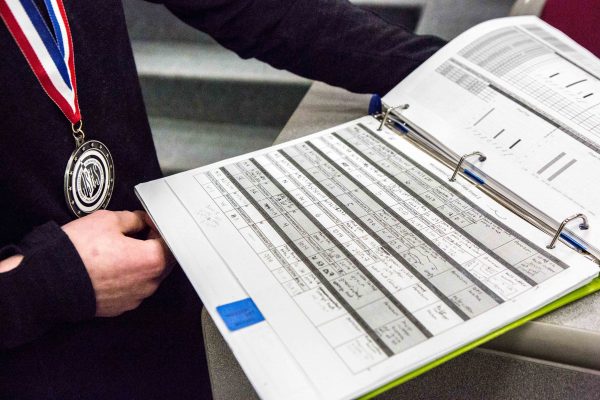Study of plastics in bay wins student competition
April 23, 2018
Meghan Murphy
907-474-7541

For several weeks, Helen Laird opted to count tiny bits of plastic instead of practicing the piano. The decision proved sound, even without the music.
The Cordova homeschool student took first place among 22 students in a regional competition for original research at the University of Alaska Fairbanks. Her winning entry in the Alaska Statewide High School Science Symposium earned Laird a trip to the national competition May 2-5 in Hunt Valley, Maryland.
Laird, whose family runs a boating charter in the Aleutian Islands, investigated whether there was a correlation between plastics on some of the islands’ beaches and the microplastics, which measure 5 mm or less, found in nearby bays.
She found a strong positive correlation between the amount of macroplastics on shore and the concentration of microplastics in the nearshore sea. These results combined with her methods and thoroughness of her research project secured her first place. Laird said she’s happy she won, but didn’t expect it.
“It’s a bit of a shock,” she said. “But I think the national competition is going to be very fun.”
The other winners of the 33rd Alaska Statewide High School Science Symposium, March 24-25, are Jessica Johnson (second place), Emma Jerome (third), Travis Brase (fourth) and Neeshi Hullavarad (fifth), Chandler Wappett (sixth), Tanja Gens (seventh) and Drew Rizk (eighth). All are Fairbanks students from Lathrop and West Valley high schools.
Laird received a $2,000 tuition scholarship, among more than $5,000 in scholarships awarded to the top five winners. More than $3,500 in cash prizes was awarded to all 22 participants. UAF’s College of Natural Science and Mathematics hosts the Alaska symposium, which is open to high school students across Alaska.

The top five winners will advance to compete with more than 200 high school students across the nation at the 56th Junior Science and Humanities Symposia Program to compete for scholarships of as much as $12,000. The research arm of the U.S. Department of Defense sponsors the national competition, which aims to interest students in careers related to science, technology, engineering and mathematics.
Laird’s mother, Katherine Laird, will accompany her daughter to the national competition as her teacher
and chaperone of the Alaska delegation. The mom and boat captain rowed a boat while her daughter netted microplastics in the bays. She said her daughter’s concern about pollution drove the research.

“She's spent a lot of time on the water and has seen plastic in places where no humans have been,” said Laird. “She’s really aware of it and passionate about the subject.”
The Alaska symposium’s co-director Denise Kind said that many students in the competition have a personal connection to their research.
“The judges are always impressed by how many of the students are exploring projects that are their own genuine interest,” said Kind, who is also a UAF biology and wildlife instructor. “It’s cool because that means they’ll likely keep going with research after they're done.”

The competition is like a science fair on a college level. The students develop a hypothesis and test it, most with guidance from a volunteer mentor. Students write a research paper on their findings and present results at the symposium to their peers, teachers and volunteer judges.
Students compete within different divisions such as environmental sciences, engineering, organismal biology and microbiology. The first two winners of each division compete against each other for a place in the national competition.
Co-director Abel Bult-Ito, a UAF professor of neurobiology and anatomy, said picking the winners this year was challenging.
“The judges had a very difficult time arriving at a decision of what the rankings should be,” he said. “All the presentations were good in their own right.”


